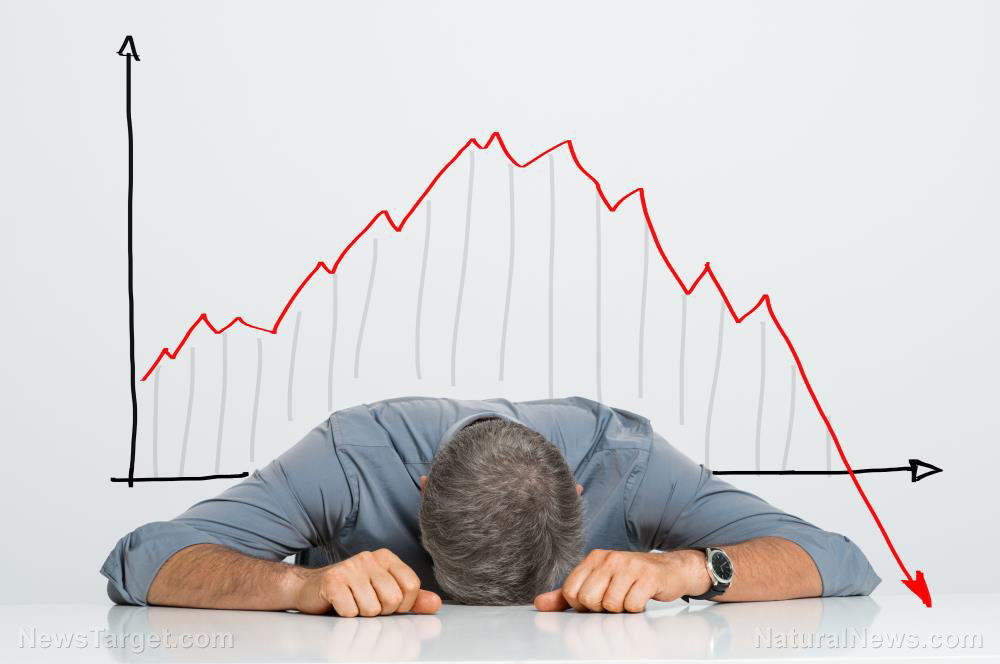Worst is yet to come: Banking crisis is far from over
01/03/2024 / By Richard Brown

The turbulence of the banking crisis is far from over. Despite a temporary lull following the collapse of several banking giants earlier this year, ominous signs suggest that the worst is yet to unfold.
Reports indicate that a staggering 2,118 bank branches shuttered in 2023 alone, with the data encompassing only 10 months of the year. Alarming rates of local branch closures coupled with the termination of over 60,000 employees in 2023 raise concerns about the health of the banking sector. (Related: The banking collapse of 2023 is now officially bigger than the banking collapse of 2008.)
While the Biden administration and mainstream financial media assert that the worst is over, promising a “soft landing’ for the U.S. economy in 2024, skepticism still looms. The ongoing hemorrhage of personnel and physical locations within the banking sector, coupled with the nation’s $34 trillion debt and the erosion of the average American consumer’s spending power due to inflation, casts doubt on the rosy predictions.
GOP presidential candidate Vivek Ramaswamy has sounded the alarm, foreseeing a financial crisis reminiscent of the 2008 debacle. He noted Bank of America’s controversial move to offer “loans without down payment” for homebuyers in “black and Hispanic communities” as a potential trigger for future issues, cautioning that today’s perceived act of “anti-racism” may be labeled as “systemic racism” if minorities default on these loans.
A cursory online search reveals that the United States isn’t alone in grappling with these challenges; Europe is also witnessing similar issues, marked by bank branch closures and the implementation of unprecedented cashless policies.
The collapse of high-profile regional banks has shaken financial markets, battered the banking industry and caused widespread unease among the public. Concerns grew that a financial contagion was in progress, where issues in one sector spread to other parts of the economy, country, or region, leading to disastrous consequences.
Questions abound about the events that transpired. Why did these banks fail in 2023 and not during the COVID-19 pandemic, which witnessed the closure of numerous other businesses? Perhaps most crucially, has the banking crisis of 2023 come to an end?
Small banks play a crucial role in American financial landscape
Understanding the root causes involves recognizing the pivotal role that smaller banks play in the American financial landscape.
Traditionally seen as the backbone of the nation, smaller banks boast strong community ties and local expertise, traits beyond the reach of Wall Street giants like JPMorgan Chase. According to Goldman Sachs, these small banks are responsible for 70 percent of all small business lending, a critical component of the U.S. GDP and workforce.
Historically, smaller banks faced limitations in diversifying their operations, stemming from the Wild West era of the U.S. financial system. Before the Federal Reserve Act, state-chartered banks operated with a single branch. The 1920s saw nearly 30,000 banks in America.
While diversity in banking may seem advantageous, restricting a bank’s size led to challenges still evident today. Smaller banks find it difficult to diversify their loan portfolios, making them less resilient to sudden changes. This vulnerability can result in a drain on reserves, forcing firesale prices and triggering a self-fulfilling prophecy reminiscent of a bank run.
In the early 20th century, Wall Street faced similar challenges, with speculators taking big risks and causing crises like the Knickerbocker Crisis of 1907. The establishment of the Federal Reserve brought much-needed regulation and structure to the financial system, ensuring a centralized authority for banking oversight.
However, the pace of contemporary changes may be outstripping the adaptability of America’s small banks. The banking crisis of 2023 finds its roots in the aftermath of the COVID-19 pandemic, which disrupted global supply chains and instigated wars, leading to soaring prices between 2021 and 2023.
Watch this report about Wells Fargo closing.
Video from Thisisjohnwilliams channel on Brighteon.com.
More related stories:
Banking system showing more signs of COLLAPSE as customers report widespread deposit delays
Online banking services are being disrupted across the U.S.
Federal Reserve will keep increasing interest rates despite worsening banking crisis
Sources include:
Submit a correction >>
Tagged Under:
Banking Collapse, Bubble, Collapse, crisis, debt bomb, debt collapse, economic collapse, economic riot, finance, finance riot, Knickerbocker Crisis, loans, market crash, money supply, risk
This article may contain statements that reflect the opinion of the author
RECENT NEWS & ARTICLES
COPYRIGHT © 2017 BUBBLE NEWS




















